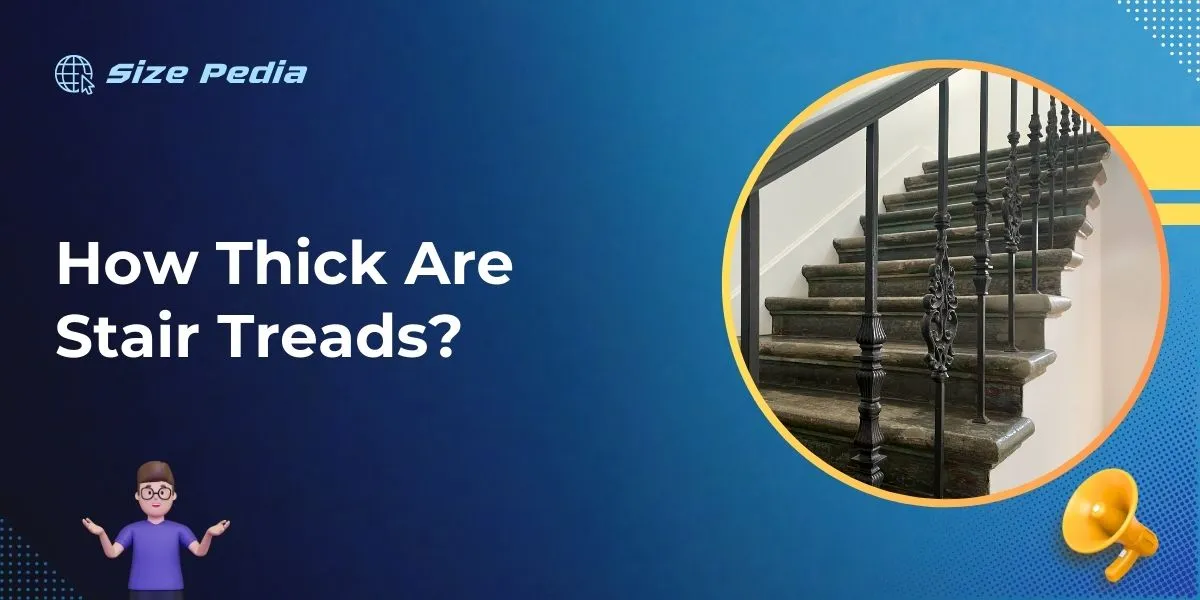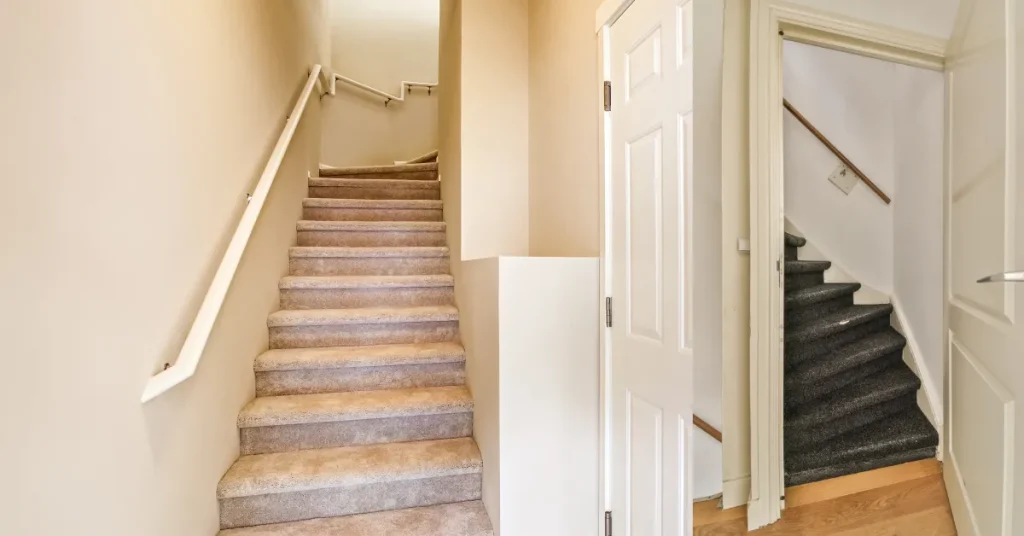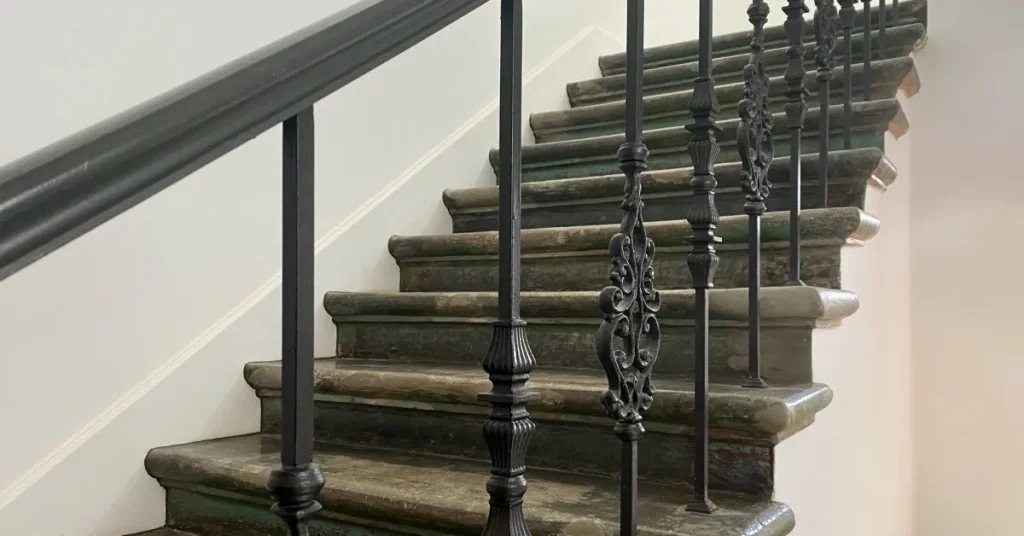Stair treads typically range from 1 inch to 1 1/4 inches thick. Standard thickness often depends on the material used and the design.
Understanding stair tread dimensions is crucial for both safety and aesthetic appeal in any building design.
Staircases are pivotal components of a structure, connecting different levels with efficiency and style. The thickness of stair treads, while it may seem like a minor detail, plays a significant role in ensuring durability and stability.
Homeowners and builders prioritize this aspect when selecting materials for stair construction to maintain a balance between functionality and visual harmony. Precise tread thickness contributes to overall stair integrity, complies with building codes, and affects the comfort of foot traffic.
Keeping these measurements accurate can enhance the lifespan of the staircase and ensure a safe ascending and descending experience for users.

Navigating Stair Tread Dimensions
Stairs are more than just a path upwards. The thickness of each stair tread is a crucial aspect. It ensures safety and comfort. Let’s dive into the world of stair treads to understand their dimensions better.
Factors Dictating Stair Tread Thickness
Stair treads vary in thickness for many reasons:
- Material: Wood, metal, and composite dictate different standards.
- Usage: High-traffic areas need thicker treads for durability.
- Support: The structure beneath influences how thick treads must be.
- Building codes: Local regulations can determine minimum requirements.
- Design: Some designs demand specific dimensions to look and function well.
Standard Stair Tread Measurements
While measurements can vary, there are common sizes many follow:
| Material | Typical Thickness |
| Wood | 1 inch (Standard) |
| Metal | Varies widely |
| Composite | Usually around 1 inch |
Remember, these are just guides not set in stone.
The Role Of Building Codes In Tread Thickness
Staircases are crucial in any multi-level structure. Both safety and comfort come from their design. Building codes dictate requirements, such as ideal tread thickness. This ensures stairs are safe and consistent for use.
Local and national regulations play a key part in determining these measurements. Let’s explore the specifics for both residential and commercial staircases.
Regulations For Residential Staircases
Residential codes vary based on location. Yet, they share similar safety objectives. Below are common requirements:
- Minimum tread depth: typically 10 inches (254 mm)
- Maximum riser height: generally 7.75 inches (196 mm)
- Uniformity: depth and height must be consistent
These rules ensure your home’s stairs are reliable and comfortable to use daily.
Commercial Stairway Code Requirements
For commercial structures, codes get stricter. Durability and heavy foot traffic are key factors. Here’s what to expect:
| Feature | Requirement |
| Tread Depth | 11 inches (279 mm) minimum |
| Riser Height | 7 inches (178 mm) maximum |
| Nosing | 0.75 inches (19 mm) minimum to 1.25 inches (32 mm) maximum |
These code requirements help maintain safe egress in busy environments.
Material Choices And Thickness Variations

Exploring stair treads reveals a world of material choices and thickness variations. These components not only ensure safety but they also add to the aesthetic appeal of staircases.
Different materials offer distinct benefits and come with their own set of standard thickness dimensions. Let’s delve into the various options available, comparing their attributes and how thickness plays a pivotal role in the selection process.
Hardwood Vs. Carpeted Treads
Hardwood treads stand out for their durability and classic look. They typically measure between 1″ and 1 1/4″ in thickness.
This ensures a stable, firm step that can handle daily foot traffic. Hardwoods like oak, maple, and cherry are popular choices, each contributing to a staircase’s longevity and style.
In contrast, carpeted treads offer a softer feel underfoot. The carpet itself is not measured in thickness but rather in pile height. The plywood or MDF board beneath the carpet is usually around 3/4″ to 1″ thick. This combination provides a cushioned, noise-damping tread option.
Concrete And Metal Tread Options
Concrete stair treads are synonymous with modern and industrial designs. They provide excellent resilience and fire resistance. Generally, these treads are around 2″ to 3.5″ thick, contributing to their solid and stable nature.
Metal treads, often found in commercial or exterior settings, offer a sleek, minimalistic appearance. These treads may vary greatly in thickness. Commonly, they range from 1/8″ for steel to 1/4″ for aluminum, providing strength without excess weight.
| Material | Thickness | Notes |
| Hardwood | 1″ – 1 1/4″ | Classic and sturdy. |
| Carpeted (Plywood/MDF) | 3/4″ – 1″ | Soft and noise-damping. |
| Concrete | 2″ – 3.5″ | Solid and fire-resistant. |
| Metal | 1/8″ – 1/4″ | Lightweight and durable. |
Enhancing Stair Safety Through Proper Tread Design
Stair treads play a crucial role in home safety. The right design keeps everyone steady on their feet. This section dives into how stair treads can combine safety and style. Let’s explore non-slip surfaces, ideal thickness, and visual cues for a secure climb or descent.
Non-slip Surfaces And Thickness
A non-slip surface is key for stair safety. It prevents slips and falls, making each step secure. Most stair treads have a special texture or material to create friction.
- Textured rubber
- Carpet with a sturdy weave
- Anti-slip tape
The thickness of the tread should be enough to withstand daily foot traffic without wearing out quickly. Standard treads are typically between 1 inch to 1 1/2 inches thick.
| Material | Thickness |
| Wood | 1″ to 1 1/2″ |
| Metal | 1/8″ to 1/4″ |
| Stone | 2″ |
Edge Visibility And Contrast
Edge visibility is essential. It helps everyone see where each step ends. This is vital for the elderly and children.
Adding contrasting colors can make a big difference. A strip of bright color at the edge of a tread marks its boundary clearly.
Here are a few ways to enhance edge visibility:
- Paint the edge with a high-contrast color.
- Use a different material for the nosing.
- Install LED lights along the tread edges.
Balancing Aesthetics And Functionality
Stair treads form the horizontal boards that you step on. The right thickness plays a role in both the look and security of your staircase.
The ideal stair tread balances visual elements with functional design. This ensures a staircase that captivates and caters to the needs of every step.
Visual Appeal Vs. Structural Integrity
Choosing stair treads is about finding harmony. Both appearance and strength are key. You want treads that catch the eye and hold weight.
A thicker tread often means a more stable step. But too thick, and it may seem bulky. Too thin, and you risk a weak stairway. The industry’s sweet spot tends to be around one inch thick. This gives a strong, yet sleek profile to your stairs.
Innovative Design While Maintaining Safety
Tread design has evolved. Professionals incorporate various materials and styles. They create stunning staircases without compromising on safety. Glass, metal, and even floating treads are in vogue. Remember:
- Slip-resistance is paramount.
- Adequate tread width and depth are vital.
- Local building codes guide minimum and maximum requirements.
It’s about blending innovation with the essentials of stair safety. This ensures a blend of cutting-edge style with peace of mind.
Maintenance And Replacement Considerations

Stair treads take a beating from constant foot traffic. Knowing when to replace them is key to safety and aesthetics.
Proper maintenance extends life. Neglect could risk accidents or higher costs later. Let’s explore factors influencing maintenance and replacement.
Long-term Wear And Tread Thickness
Thicker treads, meant for heavy use, endure longer. Usual tread thickness is about 1 inch. But, it can be more for commercial, less for home stairs. Wear-resistant materials add years to their lifespan. Think about these:
- Material: Hardwoods last longer than softwoods.
- Finish: Protective coatings fight wear and tear.
- Usage: Less busy stairs need less frequent replacement.
Tread thickness matters for long-term durability. Always check local building codes. They dictate minimum thickness for safety.
Signs Stair Treads Need Replacing
Watch for these signs to know it’s time for new treads:
- Creaks: Loud steps may signal weak spots.
- Cracks: Visible splits in wood could worsen.
- Warping: Uneven surfaces suggest structural issues.
- Wear Pattern: Over time, center of tread often wears down first.
| Frequency | Action | Benefit |
| Monthly | Visual inspection | Identify wear and tear early |
| Annually | Deep clean and varnish | Protect surface integrity |
| As needed | Replace damaged treads | Ensure safety and aesthetics |
Act before minor wear becomes major hazard. Always consult professionals for safe installation. Choose materials that match usage needs and climate. Regular checks keep stairs safe and looking good.
FAQs About How Thick Are Stair Treads
What Is The Standard Thickness Of Stair Treads?
The standard thickness for stair treads typically ranges from 1 inch to 1 1/4 inches.
What Is The Thickness Of Tread In Wooden Stair?
The tread thickness for wooden stairs typically ranges from 1 inch to 1 1/4 inches. This standard size ensures durability and safety for regular foot traffic.
Can I Use 1×6 For Stair Treads?
Yes, you can use 1×6 boards for stair treads, but ensure they are strong enough to support the weight and meet building code requirements for thickness and depth.
How Thick Is An Oak Stair Tread?
An oak stair tread typically measures around 1 inch in thickness. Some options may vary between ¾ inch to 1 ¼ inches.
Conclusion
Understanding stair tread thickness is crucial for safety and design. Standard treads are typically 1 inch thick, while other dimensions exist for special circumstances.
Always consider code requirements and material durability when choosing. This knowledge ensures a solid foundation for any staircase project.
Your next step-up is now informed and secure.
Resources:
1. https://www.access-board.gov/files/ada/guides/stairs.pdf
